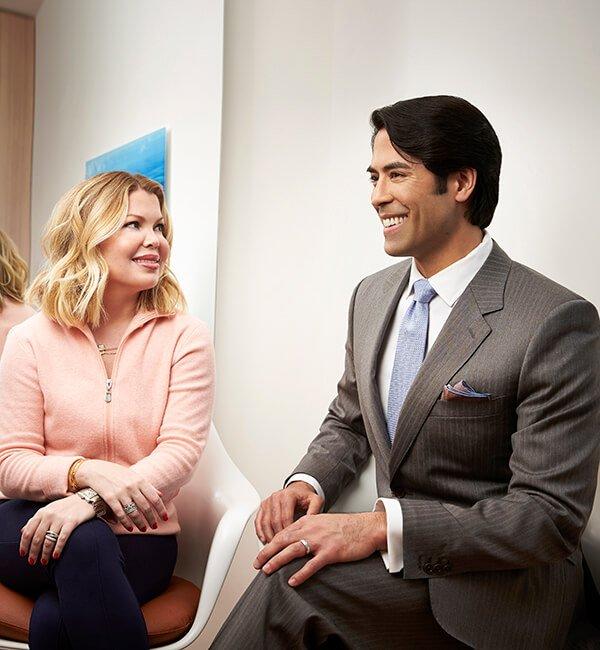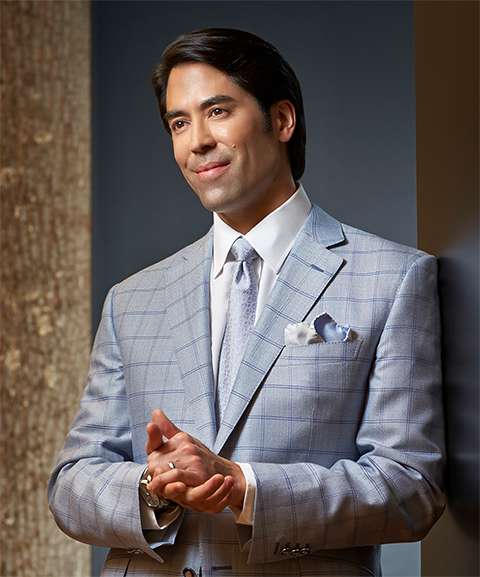- Dermatology
- Plastic Surgery
- Ariel N. Rad, M.D., PH.D.
- Face Cosmetic Surgery
- Breast Cosmetic Surgery
- Body Contouring
- Breast Cancer Reconstruction
- Destination & Travel Package
- Gallery
- Testimonials
- Boutique
- PRESS + BLOG

As a cancer survivor, you have persevered through difficult times, from cancer surgery to chemotherapy and radiation. Restoring your body back to whole, and looking better than how you started, is the “silver lining” of breast cancer care and Dr. Rad’s focus towards that goal is you. Dr. Rad is experienced in the full range of breast reconstructive surgeries, from implants to flap procedures including microvascular “perforator flap” techniques such as the DIEP flap, TUG flap SGAP “Love Handle” flap, and TDAP flap. As a member of the plastic surgery faculty at Johns Hopkins since 2009, Dr. Rad pioneered the most technically difficult operations such as the “Gluteal Artery Perforator” (GAP) flap, aka “Love Handle” flap for which he and his colleagues published the first clinical series. Dr. Rad is the only surgeon in the Washington DC and northern Virginia areas offering the SGAP “Love Handle” technique.
When it comes to breast cancer reconstruction the most advanced surgical approaches are not the only aspect of world class care. Patients’ comfort before and after surgery are of equal importance and Dr. Rad’s approach to recovery follows the most advanced “Enhanced Recovery After Surgery” (ERAS) protocols developed by anesthesiologists. Combined with his state-of-the-art surgical techniques Dr. Rad’s patients are able to return to their lives feeling whole again.

The goal of breast reconstruction procedure is to provide breast cancer survivors an opportunity to restore their breast after they have finished treating the cancer. This procedure has brought peace of mind and improved the lives of thousands of women who have overcome their fight with breast cancer.
Only 30% of women who undergo a breast cancer surgery are offered or are informed about breast reconstructive options; therefore, the majority of women are not even told that rebuilding their breasts after deforming cancer surgery is an option. Every woman who undergoes surgery for breast cancer has access to reconstruction—the 1998 Women’s Health and Cancer Rights Act requires insurance companies to cover the cost of breast reconstruction, as well as for symmetry procedures on a woman’s other normal breast. Breast reconstruction has been proven through many scientific studies to improve quality of life. It is a fact that breast reconstruction improves a woman’s body image and psychological wellbeing.
While electing not to have reconstruction (“going flat”) is always an option, very few women choose this because of the challenges wearing prostheses, inability to wear certain clothing, and having visible reminders of cancer surgery.

As a member of the plastic surgery faculty at Johns Hopkins since 2009, Dr. Rad utilizes his unique combination of training and experience within the full array of breast reconstructive surgeries to ensure that each patient receives the precise techniques needed to fit their preferences. This can be any combination of approaches, from implants to flap procedures including microvascular techniques such as the DIEP flap and beyond.
What options do I have?
Implant Reconstruction is the most popular option owing to the ease of recovery and simplicity of surgery; however, implant reconstruction often is not a good option due to scar tissue problems caused by prior breast radiation.
DIEP Flap Reconstruction is the gold standard in tissue reconstruction as it spares critically important core abdominal muscles (unlike the outdated TRAM flap) with the results of Abdominoplasty as a benefit.
LSGAP “Love Handle” Flap Reconstruction borrows love handle fat and is the most complex breast reconstructive operation in existence; Dr. Rad is 1 of only 30 microvascular surgeons worldwide who is able to perform it.
Dr. Rad performs Corrective Reconstruction for many women who have had complications or severe asymmetries resulting from radiation or poor outcomes by other surgeons.
Lumpectomy Reconstruction with Oncoplasty is a win-win as the benefits of a Breast Lift far outweigh the downsides.


Discover the full spectrum of options
Your vision for your results will emerge through detailed consultation with Dr. Rad, meticulous examination of your anatomy, and careful pre-surgical planning. While Dr. Rad’s surgical approach is unique for each patient, the goal of naturalness remains constant.
Actual Washington DC Breast Cancer Reconstruction Patient of Dr. Rad’s
See More Top Breast Cancer Reconstruction Results
Sherber+Rad cannot guarantee specific results.
Individual results may vary.
Breast reconstruction is a sub-specialty within plastic surgery focused on restoring natural breast contour, size and symmetry following mastectomy or lumpectomy for breast cancer. It is important for women who wish to restore normal breast shape and symmetry, to maintain feminine body proportions, and to wear clothing comfortably. Many techniques are available, and no one approach fits every patient. Dr. Rad is experienced in all aspects of reconstruction, including microvascular surgery (DIEP flap) in which only 2% of plastic surgeons are skilled.
Only 30% of women who undergo a breast cancer surgery are offered or are informed about breast reconstructive options; therefore the majority of women are not even told that rebuilding their breasts after deforming cancer surgery is an option. Every woman who undergoes surgery for breast cancer has access to reconstruction—the 1998 Women’s Health and Cancer Rights Act requires insurance companies to cover the cost of breast reconstruction, as well as for symmetry procedures on a woman’s other normal breast. Breast reconstruction has been proven through many scientific studies to improve quality of life. It is a fact that breast reconstruction improves a woman’s body image and psychological wellbeing.
While electing not to have reconstruction (“going flat”) is always an option, very few women choose this because of the challenges wearing prostheses, inability to wear certain clothing, and having visible reminders of cancer surgery.
Consider two different pathways for reconstruction: using implants or using your own tissue (called “autogolous reconstruction”). Each has advantages and disadvantages, and different techniques may be used to achieve great results. On one hand, implants are ideal for women who are slender and who don’t have extra fat stores from which to borrow tissue. Alternatively, using your own tissue eliminates potential problems with implants. The advantages and disadvantages of each are summarized below:
IMPLANTS Dr. Rad uses FDA-approved “gummy bear” highly cohesive gel teardrop shaped implants. These implants do not leak silicone and are designed to stay in the body indefinitely. In fact, silicone implants can be cut in half and remain in 2 solid halves – the silicone does not leak out of the shell! This silicone technology required many years of R&D and is a major advance in silicone implants as compared to the 1990s when leakage was an issue. While the FDA still recommends routine MRI scans to monitor the implants, for all practical purposes this is not necessary to detect leaks because the silicone remains as a whole.
Dr. Rad is experienced in creating natural results with round or “teardrop” implants. A suitable candidate for implant reconstruction is a slim woman who chooses a double (versus single) mastectomy, and who has not had radiation therapy.
TISSUE RECONSTRUCTION Dr. Rad is experienced in microvascular perforator flap surgery. This involves borrowing excess fat and skin from one are of the body (lower abdomen, love handles, or inner/upper thighs) and transplanting it to rebuild a woman’s breasts. Only 2% of plastic surgeons have the skill to perform microvascular surgery, and less than 1% are able to perform the most advanced techniques, such as the DIEP flap and “love handle” flap, in which Dr. Rad is skilled. A suitable candidate for tissue reconstruction is a woman who has extra fatty deposits. Dr. Rad advises against the TRAM flap because, unlike the DIEP flap, the TRAM flap sacrifices the core abdominal muscles which are critically important for core stability.
Dr. Rad’s preferred method of tissue reconstruction the DIEP flap, a technique whereby skin/fat are borrowed from the abdomen and transplanted to the breast(s) without disrupting your core abdominal muscles (a key difference from the outdated TRAM flap). Although other tissue sources are available (the buttock region, inner thighs and back), the DIEP flap is ideal for patients who have had radiation, or even those who simply prefer their own tissue for reconstruction. Patients also enjoy the natural feel, natural aging of the breasts, and the improved cosmetic appearance of the abdomens following a “tummy tuck”. The downsides to the DIEP flap are the somewhat longer recovery time, and length of scars (although very well hidden). However, these are minor disadvantages as compared with the upsides.
If you have had or will have radiation therapy, then there is about a 50% chance of developing capsular contracture with an implant. This is an abnormal scarring process around the implant that shifts it out of place. Tissue reconstruction solves the problem. This usually involves borrowing skin and fat from the abdomen (a DIEP flap), although other tissue sources are available (the buttock region, inner thighs and back.) These are tried-and-true techniques that are ideal for patients who have had radiation, or even those who simply want their own tissue for reconstruction. Patients also gain improvements in abdominal or waistline contours as a result. Continue reading for more information on the DIEP flap.
Dr. Rad recommends the following support resources for patients and families. Local breast cancer survivorship resources: Inova Fairfax Hospital Breast Cancer Center, Johns Hopkins Breast Cancer Center. National breast cancer survivorship resources: National Cancer Survivorship Resource Center, The National Cancer Institute, CancerCare
If you choose to have a permanent implant for your reconstruction, then you’ll need 2 stages if (although in some special circumstances it can be done in 1 surgery). For tissue reconstruction you may need 1, 2, or 3 stages (see figure to the right). The decision rests on multiple factors: * Whether you’ll need radiation or chemotherapy after your mastectomy (adds 1 stage) * Whether you desire larger breast size as compared to before mastectomy (adds 1 stage) * Whether your tissues and healing ability are robust (if not, then this adds 1 stage) The decision depends highly on your cancer treatment plan and Dr. Rad will guide you. The amount of time between stages will depend on your cancer treatment. If you need radiation after mastectomy, then this will delay the next stage by 1-2 weeks after the completion of your radiation treatments. However, if you do not need further cancer treatment after your mastectomy, then generally we wait 2-3 months between stages.
Breast reconstruction is very safe when performed by a skilled microvascular surgeon. The risk of significant complications from anesthesia and surgery for young, healthy patients is very low. In fact, it is lower than the cumulative risks associated with ddriving a car. General anesthesia is light and Dr. Rad works with board certified anesthesiologists and performs surgery at the top hospitals in northern Virginia, Inova Fairfax Hospital and Inova Fair Oaks Hospital, and at Sibley Memorial Hospital in DC. Dr. Rad routinely works with your oncology team to ensure that your care is comprehensive and well coordinated for maximum results.
Staged reconstruction refers to performing reconstruction over 2 or more surgeries. This is necessary if you want tissue reconstruction and there’s a chance that you may need radiation after your mastectomy. Dr. Rad recommends avoiding radiation damage of your permanent tissue reconstruction, and therefore a temporary implant, called a “tissue expander,” is placed into your breast at the time of mastectomy. This way radiation delivered to your breast will not harm the tissue that will be transplanted to rebuild your breast later. Tissue expanders can be inflated or deflated in the office, and are designed to hold your breast pocket open, maintain breast shape, and prevent the skin from contracting while you finish your cancer treatments. Most women who undergo mastectomy will have a tissue expander as a “place holder” until it is known whether the lymph nodes have evidence of cancer spread thus requiring further treatments.
The optimal breast reconstruction choice is different for each patient and it depends on many factors. You have a unique situation and there is no cookie-cutter approach. Dr. Rad spends time with each patient to achieve maximum results with the least amount of surgery and in the safest manner possible. Dr. Rad discusses Microsurgery and the LSGAP “Love Handle” Flap in these news segments: NBC 4 News FOX 5 News ABC 7 News WJZ 13 News
BCBS Carefirst – individual contract, BlueChoice Advantage, BlueChoice HMO, BlueChoice HMO Open Access, BlueChoice HMO Referral, BlueChoice Opt-Out Open Access, BlueChoice Opt-Out Plus Open Access, BlueChoice Plus, BlueCross BlueShield Preferred (MSP), BluePreferred PPO, Comprehensive Major Medical, FEP – Federal Employee Program, HealthyBlue 2.0, HealthyBlue Advantage, HealthyBlue HMO, HealthyBlue Plus, HealthyBlue PPO, Maryland Point of Service (MPOS) – requires a Carefirst referral for all services rendered, Personal Comp, Traditional/Indemnity, BCBS Out of State– individual contract, Only BlueCard PPO Plans – the insurance card with have a suitcase logo with a PPO inside, Cigna – group contract, Cigna HMO, Cigna PPO, Cigna Open Access Plus (OAP), Medicare – individual contract
Yes, and the good news is that most insurance companies recognize that Dr. Rad is one of the few surgeons with microsurgery (DIEP flap, SGAP flap, TUG flap) expertise in breast reconstruction. Therefore, if you have OON benefits then our billing department usually can convince your insurance company that Dr. Rad is the only surgeon capable of performing your surgery. Keep in mind that you must have OON benefits as part of your insurance plan to have insurance coverage. If you do not have OON benefits then you should add these to your plan, or switch to an insurance plan with which Dr. Rad is in network (see separate Q+A).
Your out of pocket cost (OOPC) is determined by your insurance plan and are comprised of co-payments, co-insurance and deductible. If you are unsure what your deductible/co-payment/co-insurance amounts are, call your insurance company and inquire. This information should be freely provided. If you would like us to help determine your OOPC then we can give an estimage after you consult with Dr. Rad. Call 202.517.7299 to schedule your consultation.
If you do not have out-of-network benefits as part of your insurance plan then be aware that your insurance company may refuse payment for any of Dr. Rad’s services and they may transfer the responsibility of payment to you. In this situation, we would work with you to request an exception with your insurance company so that your financial responsibility is minimized. If your insurance plan does not have any out-of-network benefits, then we recommend taking the following steps to ensure that your surgical fees are covered:
1. Please call your insurance company and request that out-of-network benefits be added to your insurance plan.
2. If your insurance company states that this is not possible, then request that an exception be made for Dr. Rad’s care and to reimburse for Dr. Rad’s fees.
3. You should mention to your insurance company that it is federal law that insurance companies must pay for breast reconstruction following breast cancer surgery, including surgery on the opposite normal breast.
4. If your insurance company refuses to cover Dr. Rad’s fees then we recommend switching insurance plans.
You can take the following steps to minimize your out of pocket costs for breast reconstruction:
1. Ensure your insurance plan is one with which Dr. Rad is in-network (see separate Q+A).
2. If Dr. Rad is OON with your insurance plan, then either have the highest level of OON benefits, or switch to an in-network plan.
3. Ensure your plastic surgeon’s practice works with expert billing department with expertise specifically in breast reconstruction surgery. Insurance claims processing can be complex and not all billers can successfully navigate it.
4. Avoid two-microsurgeon teams: this increases your out of pocket cost potentially by thousands of dollars due to higher billing.
Dr. Rad has performed thousands of free flap operations. His flap success rate is 99.2%. Put into perspective, the average success rate amongst highly skilled microsurgeons nationwide is 97.5%, representing a 3x higher rate of flap failure as compared with Dr. Rad’s. Dr. Rad has been able to achieve this level of flap success not only by having well over a decade of experience and high volume of microsurgery, but also having a hand selected and highly trained team in place to ensure patient care is smooth and safe.
Sometimes, but with Dr. Rad as your surgeon, the answer is no! Dr. Rad’s success rate and operative time is comparable to, if not better than, most 2-surgeon teams. With an average OR time of 3.5 hours for unilateral, and 5.5-6.5 hours for bilateral DIEP flaps, Dr. Rad’s efficiency and precision are unparalelled. Oftentimes, multiple surgeons team up because individually they do not have the skill or precision to carry your surgery independently. Furthermore, multiple surgeons involves higher billing which increases your out of pocket cost by thousands. Being in the right hands and in the right environment are the key, not necessarily how many surgeons are involved.
Our plastic surgery office in Washington DC is centered on your comfort and privacy. You’ll be received by our exquisitely attentive staff, and escorted to your own private cabana wherein you’ll feel relaxed and comfortable while consulting discreetly with Dr. Rad. First Dr. Rad will determine if you are a good candidate for surgery and during your consultation you should decide if Dr. Rad is the right surgeon for you. Credentials are crucial and, in addition to being Board certified in plastic surgery, Dr. Rad is Assistant Professor at Johns Hopkins, and he enjoys an impeccable reputation as a top flight aesthetic surgeon. His facial plastic surgery expertise is sought out as one of the best surgeons in Washington DC, northern Virginia and the US. Your safety is Dr. Rad's primary concern and he will review your medical history. You should inform Dr. Rad of any medical problems or medications that may affect your healing. If you are medically appropriate to undergo surgery then Dr. Rad's focus will be to understand what specific aesthetic concerns you have. Washington DC patients expect natural results with minimal downtime. Dr. Rad will spend time carefully listening to your concerns, asking clarifying questions and then masterfully guiding you, step by step, to understand how your unique anatomy can be improved to convey a rested appearance. Dr. Rad’s goal is to determine the most comprehensive approach for long lasting, natural results while minimizing downtime. Dr. Rad first needs to understand your specific concerns and you should prepare your thoughts prior to your consultation. Think of words that convey how you feel about your appearance. For example, Washington DC patients often say they look fatigued, tired or lackluster because of undereye bags or dark undereye circles, or they look sad, upset or disinterested such as from heavy eyebrows, excess skin above the eyes or downturned corners of the mouth. Patients often relate concerns of looking older than how they feel and this can be caused by jowls, nasolabial folds, loose neck skin, lines and wrinkles. Try to put into words how your appearance bothers you, and the priority you give to each area. Dr. Rad will then present to you his expert opinion about which procedures would be best to restore your anatomy to create a rested and refreshed appearance. And since surgery is intricate Dr. Rad will guide you through a stepwise approach of aesthetic analysis and he’ll deliver his recommendations in a clear and honest manner. Dr. Rad will present all options available in modern day surgery, both non-surgical and surgical. Dr. Rad and Board certified dermatologist Dr. Sherber often collaborate to optimize patients’ results and to minimize invasiveness. As such Dr. Rad’s modern approach to surgery harnesses the power of both dermatology and plastic surgery as both specialities address different aesthetic challenges. For example, plastic surgery is effective to lift, tighten and volumize loose, atrophied tissues, whereas dermatologic treatments such as laser, radiofrequency tightening and skincare are best to improve skin texture, pigmentation and tone. Dr. Rad can address any concerns regarding skin quality and how to obtain and maintain optimal results. Dr. Rad will review with you photos of his patients’ results (many of which you’ll not find online due to privacy concerns) to highlight his aesthetic approaches and skill. He will take your photographs, which remain confidential, to assist with the planning of your surgery. For your safety Dr. Rad performs surgery in a hospital-based operating room, considered to be the safest environment, rather than in the office. Anesthesia is delivered by a board certified anesthesiologist (MD) and you’ll be under light anesthesia which is important for your safety and comfort. You will receive a customized quote for the procedures in which you’re interested. Once approved we may then move forward with pre-operative preparations and you will meet with Dr. Rad again at your final in person consultation prior to surgery. Dr. Rad’s reputation as one of the most technically gifted surgeons attracts patients nationally and from around the world. We cater to patients from across the globe by arranging virtual consultations, luxury accommodations at The Jefferson hotel, Washington DC’s most luxurious 5 star boutique hotel, as well as private nursing care. Your privacy, comfort and safely achieving exceptional results are our top priorities.

WHAT CAN I EXPECT FROM MY CONSULTATION WITH DR. RAD?

“You rarely find a person who is extremely skilled and a perfectionist yet very modest, humble, sympathetic and warm hearted with a pleasant disposition. That is Dr. Rad! I was so fortunate to have found Dr. Rad, one of the very few in the country who can do Diep Flap reconstruction. Not only the reconstruction results are excellent, the pre-surgery and post-surgery care is comforting. He is always there when needed and explains every detail with lot of patience. Thank you, Dr. Rad!”
Kavitha D. | June, 2017


Dr. Rad’s credentials speak for themselves: Princeton (B.S.E, Magna Cum Laude), Duke School of Medicine (M.D.) and University of London (Ph.D.) educated and Johns Hopkins Plastic Surgery trained, he is a Diplomate of the American Board of Plastic Surgery, Assistant Professor at Johns Hopkins, and long-standing member of the American Society of Plastic Surgeons and the American Society of Aesthetic Plastic Surgery. Dr. Rad is considered an expert in facial plastic surgery and microsurgery. He is ranked the #1 plastic surgeon in Washington DC based on aggregate ratings from all independent ranking websites: “top rated local“, “three best rated” top plastic surgeon and “top plastic surgeon reviews“. SHERBER+RAD have never engaged in paid advertising, and all rankings, reviews are from vetted and respected sources.
Many patients wish to anticipate their personal financial responsibility when planning for surgery. First, keep in mind that you have the right to insurance coverage of reconstruction by the 1998 Women’s Health and Cancer Rights Act. This includes coverage for surgery on your affected breast as well as your other breast for symmetry. Second, Dr. Rad is in-network with Cigna as well as several Blue Cross Blue Shield (BCBS) insurance products including CareFirst, BlueChoice and others (call us to find out if Dr. Rad is in network with your provider). If you have United, Aetna, Anthem BCBS, Humana, Kaiser Permanente, TriCare or any other insurance plan, then ask your insurer if you have out-of-network benefits. If you do then you likely qualify for coverage under Dr. Rad’s care. If you’re not sure, our professional billing department can help you determine what your benefits are.
If you are interested in highly specialized microsurgery flap techniques such as DIEP flap, SGAP “love handle” flap or TUG flap surgery then you may qualify for coverage under Dr. Rad’s care because these are highly specialized procedures and very few plastic surgeons have the skill to perform them. Dr. Rad is the only surgeon in the DC/Northern Virginia area performing the SGAP flap.
When 2 or more plastic surgeons are involved in your surgery your out-of-pocket cost can increase by thousands. Plastic surgeons often team up to perform microsurgery because (1) they are unable individually to perform these surgeries with high degree of safety and precision, and/or (2) surgeon reimbursement is higher. With his highly specialized team, Dr. Rad operates as a solo surgeon which greatly reduces your out-of-pocket cost. Importantly, Dr. Rad’s patients enjoy beautiful outcomes and >99% flap success rate – a much higher success rate than most two-surgeon teams (97.5%) – and his average surgery time is approximately 6 hours for bilateral DIEP flaps (national average is 8-12 hours, and can even exceed 20 hours even for two-surgeon teams). More surgeons being involved is not necessarily better; technical skill and experience are most important.
Our billing department uses a proven 3-step process to settle claims with your insurance so that your out-of-pocket costs are minimized:
1. We take the necessary steps to maximize insurance coverage for your surgery by requesting insurance “prior authorization.” This is an agreement from your insurance company to cover the costs of surgery and we will do everything in our power to obtain your insurance company’s prior authorization before surgery.
2. We are your ally! Dr. Rad and his team work with a professional billing service to ensure your insurance company agrees to cover the cost of surgery.
3. We don’t give in! Even with prior authorization some insurance companies push back on total coverage. We work with other professionals in the legal sphere to convince your insurance company that full coverage is required.
Many hundreds of patients have enjoyed beautiful lifelong results under Dr. Rad’s care, and we will be happy to answer your questions. Call us at 202.517.7299 to schedule your consultation with Dr. Rad.
We look forward to welcoming you for your private consultation with Dr. Rad
Enjoy a unique experience centered on your privacy and on unhurried attention to your concerns
Or Send a confidential inquiry and our staff will be happy to reach out to you
Sherber+Rad1101 15th St. NW, Suite 100, Washington, D.C. 20005